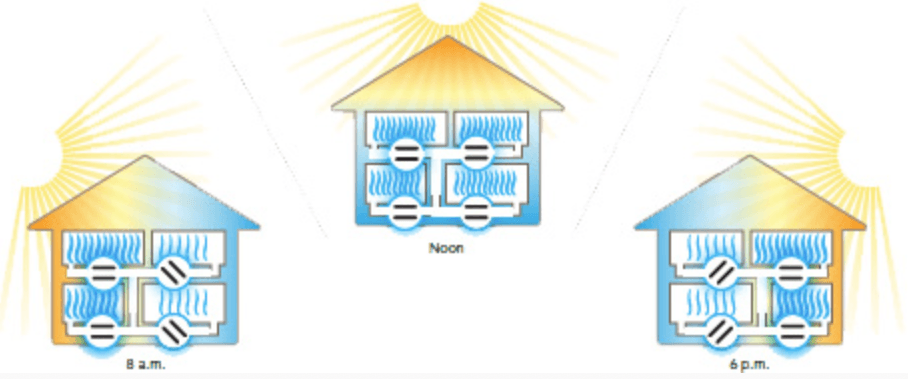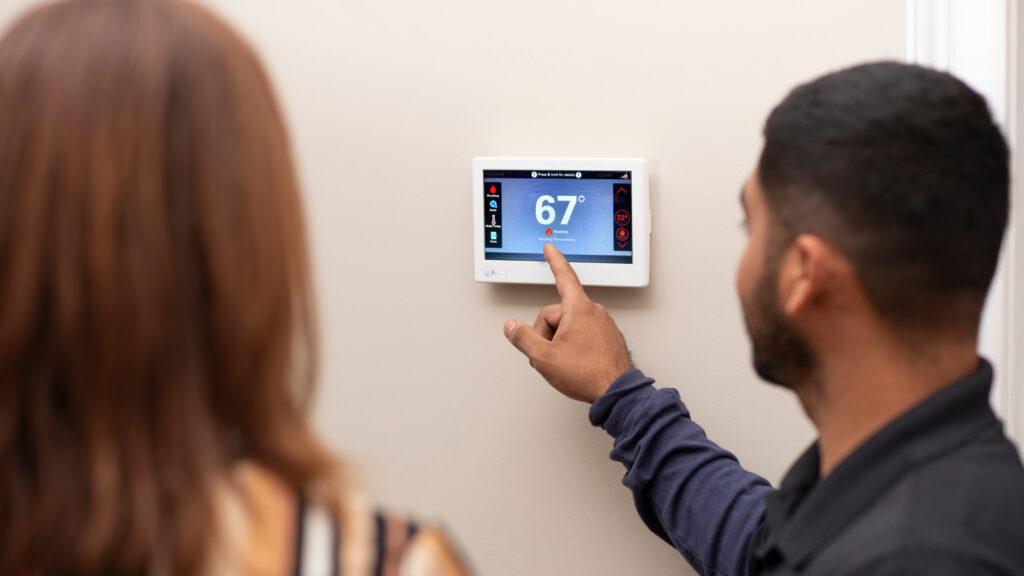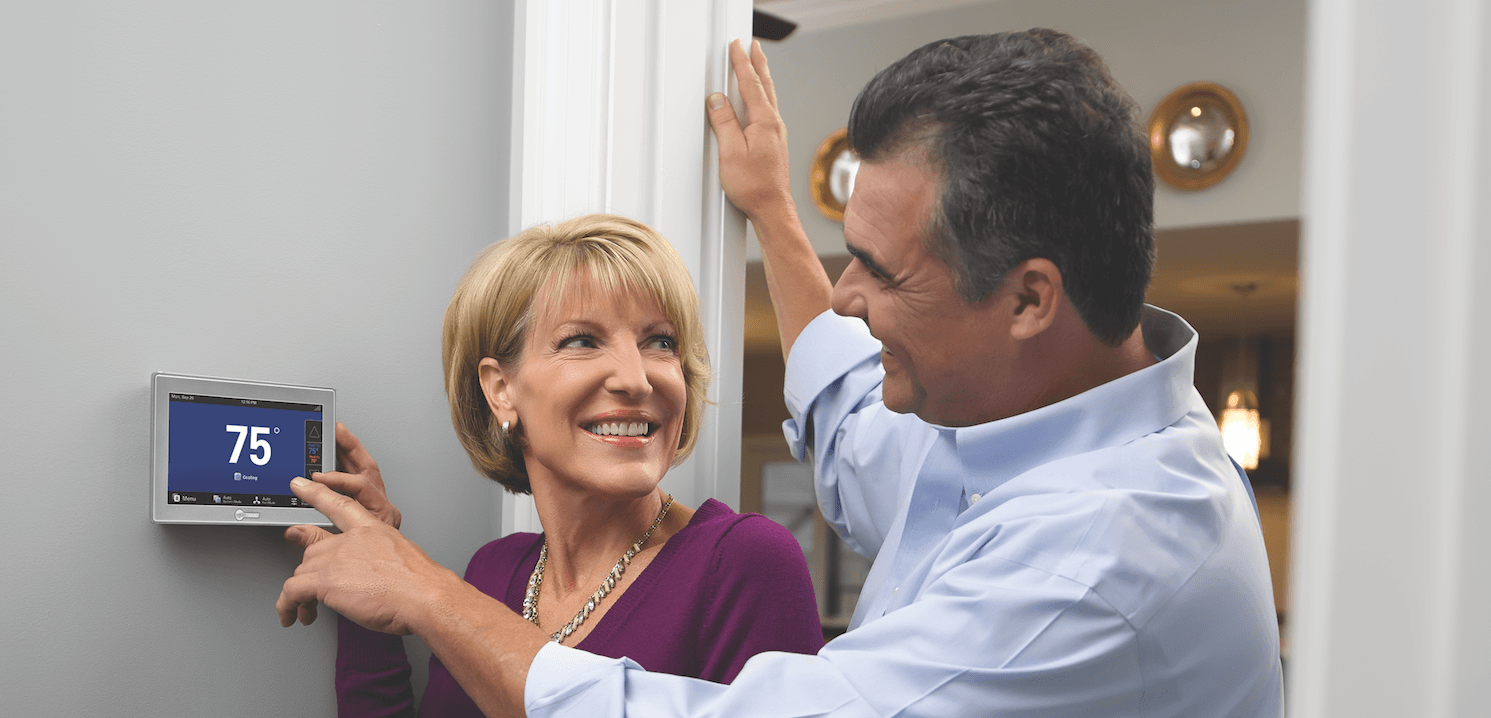Help! Why Is My House Hot Upstairs and Cold Downstairs?
Is your second floor hotter than the rest of your house? Here’s how to keep it cooler, especially in the summer.
It’s summer, your air conditioner’s on full blast and every room downstairs feels cool and refreshing. Your second floor, though? It feels like you’re trekking through the Sahara.
Sound familiar?
Scores of homeowners experience the same frustration during the hottest months of the year when their two-story homes get hot and humid upstairs while staying cool and airy downstairs.
The good news is that you don’t have to accept a hot upstairs and cold downstairs as a fact of life. Learn why this keeps happening and what you can do to change it.
First, here’s why your second floor feels like a sauna
- Heat rises – Blame physics: hot air rises while cold air sinks. That means your upstairs typically gets hotter than your lower levels, even if your air conditioner’s working in overdrive.
- Your roof’s hot, too – Unless you have shady tree cover, your roof absorbs a ton of heat from the sun. That hot air seeps into your attic before settling onto your top floor. If you don’t have attic space to buffer the heat or your roof isn’t well-insulated, you’ll automatically feel hotter upstairs.
- Faulty ductwork – Ducts absorb the cool air from your HVAC system and distribute it throughout your home. If your ducts are old, were installed poorly or leak, then your air conditioner may struggle to evenly cool your home.
- You may be using a single-zone system – Single-zone systems are separate air conditioning units that heat or cool a single area in your home. They’re great if you want to manage the temperature in one room or dedicated space. They’re not so great if you’re trying to cool all your second floor in the dead heat of summer. You may want to consider switching to multi-zone air conditioning, which lets you control the temperature in several different rooms, or zones. Browse our selection of multi-zone systems.
- Your air conditioner might be old – Most air conditioners last up to 15 years. If yours isn’t sufficiently cooling your home, it could simply be nearing the end of its lifespan. Consider replacing your old unit. A newer, more energy-efficient model could more adequately cool your home, help establish an equilibrium in temperature between floors and save you in utility costs. Check out Trane’s most energy-efficient air conditioners to get your top floor feeling cool again.
Contact a dealer
From finding the right HVAC system to maintaining it, a dealer is your best resource.
Get your questions answered every step of the way.
10 Ways to Cool Down Your Second Floor
- Block the sun – Close your blinds and shades to block excessive light and ultraviolet rays. You can even try heat blocking shades or UV blocking film. Be sure to seal all cracks, holes and gaps around windows to prevent air leaks. And you may want to consider upgrading to more energy-efficient double pane windows.
- Insulate and ventilate – Insulation plays a crucial role in keeping your home comfortable and energy efficient (it can help lower your energy bills). Try adding extra insulation to your roof or attic. An attic fan can help circulate air and limit the amount of hot air lingering on your second floor. You may also want to try air sealing your attic to stop heat from getting in.
- Repair your ductwork – If leaky ductwork is the source of your cooling issues, contact a dealer to identify the areas where the leak is happening. Your dealer may cover them with insulation or use an aluminum foil tape or mastic sealant to cover apparent air leaks.
- Reduce your use of lights and appliances – Avoid creating more heat upstairs. Keep your lights off or dimmed. Cut back on appliances that generate heat, like hair dryers, curling irons, dishwashers, ovens and stoves. Even if your appliances are on your lower floors, the heat can still rise.
- Change air filters – A dirty air filter can restrict the flow of cool air and force your HVAC system to work harder. Check and change your air filters to ensure airflow isn’t hindered as it moves through your home. Bonus: Air filters can also reduce allergies!
- Adjust the fan setting on your thermostat – Switch it from “auto” to “on,” so the blower fan runs constantly and creates a more even mix of air throughout your home. Running your fan doesn’t use a lot of energy. It may actually lower energy usage because your HVAC system won’t need to cycle as often.
- Create climate zones – Start by partially closing a few (not all) vents on your first floor. This forces your AC system to direct more air upstairs. Take this concept to the next level by having an HVAC professional install a climate zone system, like the Trane ComfortLink® II Zoning System. It’s a smart home comfort system that lets you remotely manage your home’s climate, set a schedule based on your home’s unique temperature patterns and monitor and control your zoning system through any web-enabled device.
- Fire up the (ceiling and floor) fans – Your ceiling and floor fans can help circulate the cold air that may be lingering near the floor. Just remember that fans cool people, not rooms. So, if you’re planning to be out of the room for a while, turn the fan off to limit energy use.
- Tinker with your vents – Your air vents may have levers or dials that you can adjust to help control airflow in specific rooms. Like we mentioned before, keep the vents on your second floor fully open while only keeping vents on your first floor partially open. That’ll force more cool air to circulate to your second-floor rooms. Your home may also be set up with top-to-bottom return vents, which absorbs warm air and redistributes it as cold air throughout your home. If that’s the case, open the top vents during the summer. This forces your system to take in air from the higher points of your room, where warm air tends to gather.
- Consider adding an extra HVAC system – If you’ve tried a little bit of everything and your upstairs still won’t cool down, your home may be too large for your current HVAC system. Talk to your local Trane dealer about upgrading to a larger HVAC system or adding a second system upstairs. Shop for air conditioners.

One Last Tip!
There’s no denying that a humid upstairs is uncomfortable, maybe even unbearable. But, understanding how temperature works may help temper your expectations about what your home should feel like inside.
For instance, if it’s 98 degrees outside, your air conditioner may never be able to get your home down to 68 degrees. So, what can you do? You can learn how to carefully regulate your thermostat, which can help slow down the flow of heat in your home and cool your rooms on a schedule, like right before you get home. (You may be able to lower your utility bills, too!)
If you’re worried that your air conditioner isn’t working properly, call your local Trane dealer for a seasonal inspection. They can also help you decide if climate zones or an additional system could make your home more comfortable. Schedule a seasonal inspection.




